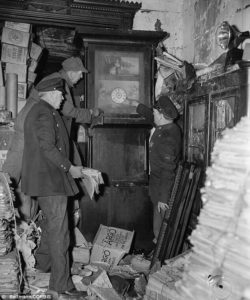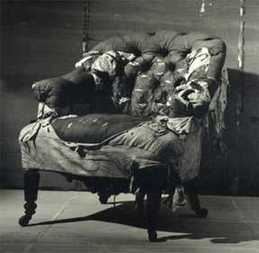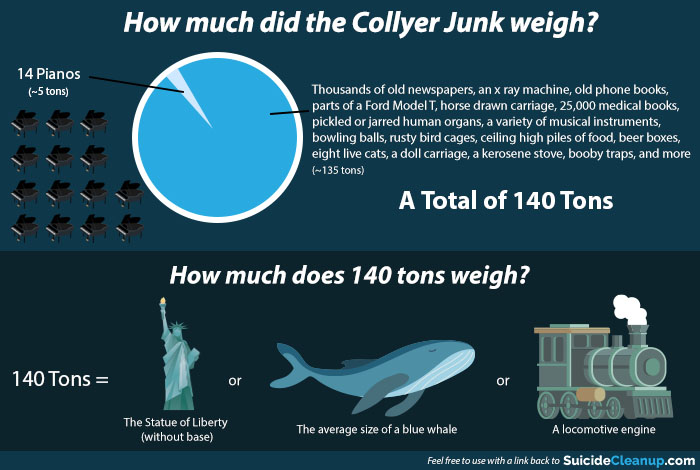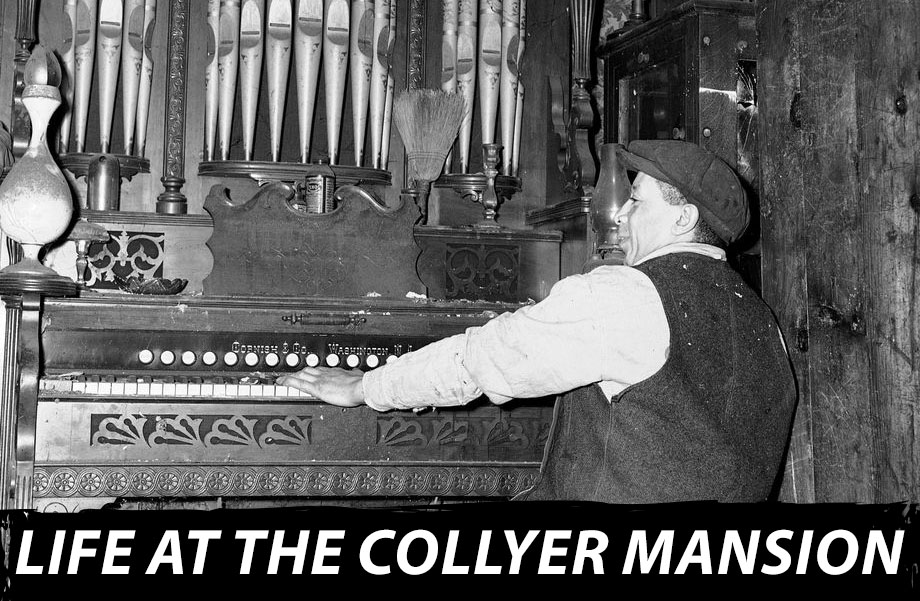
Dreading Valentine’s Day? You’re Not Alone
February 14, 2023
Recognizing the Warning Signs of Suicide
April 6, 2023Langley Wakeman Collyer and Homer Lusk Collyer were known as the infamous Collyer Brothers to the Harlem community. They may be America’s earliest example of a serious biohazard situation involving a hoarding home. Perhaps their notoriety paved the way for future hoarding help and was the reason the property was turned into a pocket park named after the brothers.
Despite their legacy as mass hoarders, their tale is often forgotten. Langley and Homer grew up in a Manhattan neighborhood that knew the family well. Their father was a well known community doctor and their mother was a former opera singer. The brothers were accomplished academically and both graduated from Columbia University. Homer had a degree in law and Langley had a degree in engineering and chemistry. After their parent’s passing, the two started to withdraw from social life.
Hoarders Til Death Do Us Part
They continued to live together in the Harlem brownstone they inherited from their mother. They moved all their father’s possessions from his medical practice and apartment (where he had been living separately from his wife) into the brownstone with their mother’s and their own. This was just the beginning.
The duo continued living in the property but suddenly disappeared during the 1930s. It was said that the changing neighborhood and Homer’s total loss of eyesight led the brothers to completely withdraw–however, some neighbors spread rumors they were guarding riches and valuables inside the home.
Langley explained to reporters that he had resigned from work to take care of his brother full time. He explained he would help bathe and feed Homer a diet consisting only of peanut butter, black bread, and 100 oranges a week. At times, Langley would stroll 6 miles away to get bread and newspapers for his brother. He once told a reporter that he was keeping newspapers so that “when Homer regains his sight, he can catch up on the news.”
Their Harlem brownstone was rapidly deteriorating and even the site of a small house fire in 1941. Langley had been heating the 4 story 1,500 square foot mansion using a small kerosene heater, generating electricity using a Motel T Ford engine, and pumping water from a nearby park. Langley sightings were also getting progressively more sparse.
An Anonymous Tip
On March 21, 1947, when the police arrived at the home responding to an anonymous tip reporting a decomposition odor, no one answered. The doors were locked, there was no doorbell, or telephone, and all of the windows to the home were blocked.
To enter the premises, several men had to hurl piles of junk from the mansion–including ceiling high stacks of newspapers, pianos, horse drawn carriages, over 25,000 books, gutted parts of a Model T Ford, half a sewing machine, boxes, parts of a wine press, and thousands of other items that had little to no monetary value. The tons of junk was arranged in room tunnels with hidden booby traps set throughout.

The chair Langley Collyer passed away in.
We’ve Found a Body
After only five hours of digging, the police discovered Homer Collyer in a blue and white bath robe with his head keeled over in his lap. A medical examiner determined Homer had died of starvation and heart disease and had only been dead for ten hours. This led law enforcement to believe Langley had called the police and might be on the run. The cleanup of the brownstone continued over the next few weeks as authorities and rumors of Langley being spotted over the tri-state area continued.
Langley was finally discovered on April 8, 1947. He was found dead under pounds of junk released by one of his own booby traps in one of the tunnels he made. The decomposition smell was coming from rats that had been eating his decomposing body.
Cleanup crews continued to remove the tons of junk which had also compromised the structure of the building. The most concerning items they discovered were human organs in pickled jars, human skeletons, a two headed baby doll, used bottles, plaster busts, and dirty, empty tin cans, food jars, and boxes pulled from restaurant garbages over almost two decades. Near Homer’s body were 34 checkbooks to 34 separate bank accounts that had a total cumulative amount of roughly $3k (around $41,785 in today’s money).

How much junk did the Collyer Brothers collect? Between 14 pianos, thousands of old news papers, an x ray machine, a kerosene stove, jarred human organs, ceiling high piles of food boxes, eight live cats, and more, the Collyer junk amassed roughly 140 tons.
The Collyer Estate, Net Worth, & Legacy
In the end, roughly 140 tons of junk was pulled from the estate. The salvageable items amassed roughly $2,000 ($26,000 in today’s money). Some of the items, including the chair Homer had been found in, were auctioned off to private collectors. The estate, Collyer jewelry, cash, and securities were ultimately valued at $20,000 (adjusted $1.2 mill in 2023). Fifty six people attempted to claim the estate, though a New York court ultimately decided to split it between 23 verified first and second cousins.
The City of New York condemned the home. The roof was leaking, there was mold, and the walls had been compromised to the point the bricks were exposed. It was considered a fire hazard and razed it shortly after it was emptied. Today, it is a pocket park maintained by the city at the corner of 5th Ave & W 128th St, named after the brothers.
Since the 1940s, the brothers have been featured or referenced in many TV shows and movies. For decades, their name also became used by mothers when referring to when their son or daughter’s rooms were messy and needed to be cleaned.
Sources:
https://www.messynessychic.com/2017/07/21/the-cautionary-tale-of-the-harlem-hoarders/
https://www.harlemworldmagazine.com/the-legendary-collyer-brothers-harlem-ny-1881-1947-rare-video/




